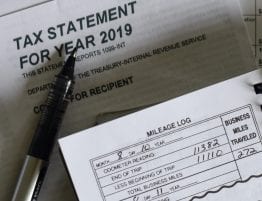
If you are a combat-injured veteran and you received Letter 6060-A or 6060-D from the IRS, it means you are eligible for a tax refund. The IRS is sending out these letters to affected veterans so that they can file an amended return to claim their refund before it’s too late. To file a claim, an amended tax return (Form 1040X) needs to be filed. A copy of the notice also needs to be attached with the form.
”Are you eligible for the refund?” Tap Into dives into the details:
”The Combat-Injured Veterans Tax Fairness Act of 2016 provides that most veterans who received a one-time, lump-sum, disability severance payment when they separated from military service are entitled to a refund if that payment was claimed as income. The payment must have been received after January 17, 1991, and before January 1, 2017. Eligible veterans should have received a mailed notice from the Department of Defense in July 2018 explaining how to claim their tax refunds.
Some veterans have yet to act.
Deadlines are soon approaching as the time available for claiming these tax refunds is limited to:
- One year from the date of the Department of Defense (DoD) notice, or
- Three years after the due date for filing the original return for the year the disability severance payment was made, or
- Two years after tax was paid for the year the disability severance payment was made.
Veterans claiming their refund have the normal limitations period for claiming a refund or one year from the date of their letter from the DoD, whichever expires later. As taxpayers can usually only claim tax refunds within three years from the due date of the return, this alternative time frame is especially important since some of the claims may be for refunds of taxes paid as far back as 1991. While many veterans have claimed their refunds in the past year, many others have not, and time is running short.
Two options for claiming the tax refund:
- Option 1: File a claim based on the actual amount of the overpayment attributable to your lump-sum disability severance payment, or
- Option 2: Choose to claim the standard refund amount listed below that corresponds to the year the disability severance payment was made. Simply write ‘Disability Severance Payment’ on Form 1040X, line 15, and enter the standard refund amount listed below on line 15, column B, and on line 22, leaving the remaining lines blank.
Veterans can submit a claim based on the actual amount of their disability severance payment by completing Form 1040X and carefully following the instructions. An original return is not necessary if the information for that tax year available. Veterans without the required information to complete the Form 1040X can request a transcript online at IRS.gov/transcript.
Option 2, claiming a standard refund amount, is the easiest way to request a refund because it does not require finding the original tax return or requesting information about the return from the IRS. It may result in a larger or smaller refund based on the actual amount from the return. The standard refund amounts are:
- $1,750 for tax years 1991 — 2005
- $2,400 for tax years 2006 — 2010
- $3,200 for tax years 2011 — 2016
Special Instructions.
Carefully follow the instructions in the notice mailed by the Department of Defense in July 2018:
- Complete and file IRS Form 1040X, Amended U.S. Individual Income Tax Return, for the tax year the disability severance payment was made
- Write either ‘Veteran Disability Severance’ or ‘St. Clair Claim’ across the top of the front page of the Form 1040X
- All amended returns are filed on paper, so veterans should mail their completed Form 1040X, with a copy of the DoD letter, to:
Internal Revenue Service
333 W. Pershing Street, Stop 6503, P5
Kansas City, MO 64108
Eligible but never received a DoD notice.
Veterans who did not receive the notice from the Department of Defense and received a disability severance payment after January 17, 1991, that was reported as taxable income, can still file a claim. They must include the necessary documentation to file with their Form 1040X.
Fill out the form for a free and confidential consultation.









